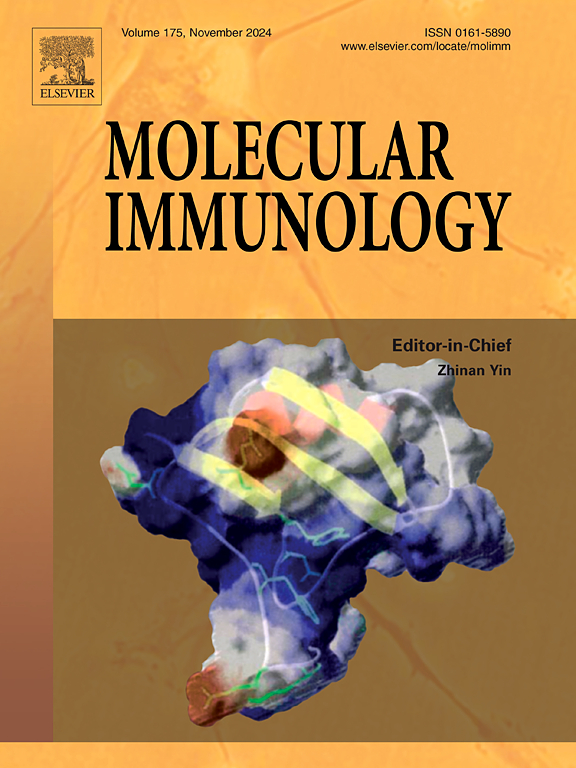Curcumin mitigates testicular ischemia-reperfusion injury by suppressing NLRP3-mediated pyroptosis
IF 3
3区 医学
Q2 BIOCHEMISTRY & MOLECULAR BIOLOGY
引用次数: 0
Abstract
Background
Testicular torsion results in damage by interrupting the blood supply. Nevertheless, the reestablishment of blood flow following testicular detorsion, a process known as testicular ischemia-reperfusion injury (IRI), often leads to further injury. Curcumin is a naturally occurring phenolic compound that has anti-inflammatory and antioxidant implications. It has been demonstrated to confer preventive implications in IRI between different organs. We propose ascertaining curcumin function in testicular IRI.
Methods
We created a mouse model to study testicular torsion/detorsion (T/D) and a germ cell model to study oxygen-glucose deprivation/reperfusion (OGD/R). The evaluation of testicular ischemia damage was conducted using histological staining. Testicular tissues were examined for the presence of reactive oxygen species (ROS) and pyroptosis-linked proteins employing western blot (WB), RT-qPCR, MDA, SOD assay kits, and immunohistochemistry analysis. Cell viability and cytotoxicity were measured via the Cell Counting Kit-8 (CCK-8) and LDH test kits. The amounts of inflammatory proteins were quantified employing ELISA, immunofluorescence, and immunoblotting methods.
Results
We observed that testicular IRI is involved in oxidative stress damage in cells, with an associated elevation in pyroptosis-linked proteins NLRP3 and caspase-1 (CASP-1) levels. Additionally, there is a rise in the inflammatory cytokines IL-1β and −18 levels. After treating with curcumin, we noted a significant inhibition of pyroptosis, particularly when the concentration was 20 μmol/L, where the inhibitory effect was most pronounced. Further investigation into the underlying mechanisms revealed that curcumin exerts its preventative implications against testicular IRI by targeting the NLRP3 pathway to suppress IRI-mediated pyroptosis.
Conclusions
Curcumin mitigates testicular IRI-induced pyroptosis by modulating the NLRP3 signaling pathway, thereby alleviating cellular and tissue damage.
姜黄素通过抑制nlrp3介导的焦亡减轻睾丸缺血再灌注损伤
背景:睾丸扭转通过阻断血液供应导致损伤。然而,睾丸扭曲后血流的重建,即睾丸缺血-再灌注损伤(IRI),通常会导致进一步的损伤。姜黄素是一种天然存在的酚类化合物,具有抗炎和抗氧化作用。它已被证明对不同器官之间的IRI具有预防意义。我们建议确定姜黄素在睾丸IRI中的功能。方法建立小鼠睾丸扭转/扭转(T/D)模型和生殖细胞氧糖剥夺/再灌注(OGD/R)模型。采用组织学染色评价睾丸缺血损伤程度。采用western blot (WB)、RT-qPCR、MDA、SOD检测试剂盒和免疫组化分析,检测睾丸组织中活性氧(ROS)和焦氧相关蛋白的存在。通过细胞计数试剂盒-8 (CCK-8)和LDH检测试剂盒检测细胞活力和细胞毒性。采用ELISA、免疫荧光和免疫印迹法定量检测炎症蛋白的数量。结果我们观察到睾丸IRI参与了细胞的氧化应激损伤,并伴有焦氧相关蛋白NLRP3和CASP-1 (CASP-1)水平的升高。此外,炎症细胞因子IL-1β和- 18水平升高。用姜黄素处理后,我们发现对焦亡有明显的抑制作用,特别是当浓度为20 μmol/L时,抑制作用最为明显。对其潜在机制的进一步研究表明,姜黄素通过靶向NLRP3途径抑制IRI介导的焦亡,从而发挥其对睾丸IRI的预防作用。结论莪术素通过调节NLRP3信号通路减轻睾丸iri诱导的焦亡,从而减轻细胞和组织损伤。
本文章由计算机程序翻译,如有差异,请以英文原文为准。
求助全文
约1分钟内获得全文
求助全文
来源期刊

Molecular immunology
医学-免疫学
CiteScore
6.90
自引率
2.80%
发文量
324
审稿时长
50 days
期刊介绍:
Molecular Immunology publishes original articles, reviews and commentaries on all areas of immunology, with a particular focus on description of cellular, biochemical or genetic mechanisms underlying immunological phenomena. Studies on all model organisms, from invertebrates to humans, are suitable. Examples include, but are not restricted to:
Infection, autoimmunity, transplantation, immunodeficiencies, inflammation and tumor immunology
Mechanisms of induction, regulation and termination of innate and adaptive immunity
Intercellular communication, cooperation and regulation
Intracellular mechanisms of immunity (endocytosis, protein trafficking, pathogen recognition, antigen presentation, etc)
Mechanisms of action of the cells and molecules of the immune system
Structural analysis
Development of the immune system
Comparative immunology and evolution of the immune system
"Omics" studies and bioinformatics
Vaccines, biotechnology and therapeutic manipulation of the immune system (therapeutic antibodies, cytokines, cellular therapies, etc)
Technical developments.
 求助内容:
求助内容: 应助结果提醒方式:
应助结果提醒方式:


